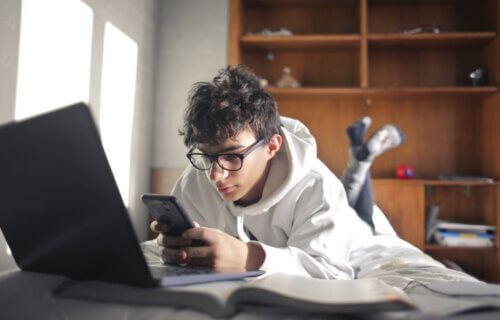CAMBRIDGE, United Kingdom — Today’s children are growing up in a way unlike any other generation. There’s really no way of predicting exactly how modern technology like smartphones and tablets will influence today’s children by the time they mature into tomorrow’s adults. However, a new study finds that, at the very least, eye doctors will see booming business at their practices. Researchers from Anglia Ruskin University find an association between screen time and a higher risk and severity of myopia (nearsightedness) in both children and young adults.
This project was an international effort, featuring contributions from scientists in the United Kingdom, China, Singapore, and Australia. They analyzed over 3,000 earlier studies focusing on the relationship between myopia and smart device screen time. Collectively, all of that data encompassed individuals as young as three months and as old as 33 years-old.
Half the world may need glasses within 30 years
That analytic process led to the conclusion that high levels of smart device screen time has a connection to a roughly 30 percent higher risk of myopia. Astoundingly, researchers report that when users pair lots of phone or tablet screen time with excessive computer use that risk jumps up to about 80 percent.
“Around half the global population is expected to have myopia by 2050, so it is a health concern that is escalating quickly. Our study is the most comprehensive yet on this issue and shows a potential link between screen time and myopia in young people,” says Professor Rupert Bourne, Professor of Ophthalmology in the Vision and Eye Research Institute at Anglia Ruskin, in a university release.
Study authors add that this work feels especially timely considering how children are likely to spend even more time staring at screens now due to remote learning efforts during the COVID-19 pandemic.
“This research comes at a time when our children have been spending more time than ever looking at screens for long periods, due to school closures, and it is clear that urgent research is needed to further understand how exposure to digital devices can affect our eyes and vision. We also know that people underestimate their own screen time, so future studies should use objective measures to capture this information,” Prof. Bourne concludes.
The study appears in the The Lancet Digital Health.
